AS01 in SAP: How to Create an Asset?
Hi Everyone, this is gonna be my first post on asset accounting. If you are not familiar with what fixed assets are, then you can go through my post on the SAP FI Process Flow. To give you a one-liner, a fixed asset is an asset that a company has purchased for its operations. It could be a plant, machinery, land, furniture, laptops, etc. Each fixed asset has a certain useful life and it depreciates its value over a period of time. Today I will show you how you can create an asset using tcode AS01 in SAP.
Before you start executing AS01 in SAP, it is important to understand that you need to maintain certain asset configurations first. You need to maintain the asset classes for all the asset categories, depreciation areas for calculating the depreciation values, etc. Once you have maintained these configurations, only then you should proceed further with this tutorial.
In this tutorial, I will focus on the transaction code AS01 which allows you to create a new asset. If you want to create historical assets with balances, then you can use transaction AS91 (to create the asset and update asset balances in ECC) or ABLDT (to update asset balances in S4 HANA). Without any further ado, let’s begin!
Table of Contents
AS01 in SAP: Create a new fixed asset
The first step in the process of creating a new asset is to either execute the transaction code AS01 in SAP or navigate through the following path:
| SAP Path | Accounting -> Financial Accounting -> Fixed Assets -> Asset -> Create |
After executing the t-code AS01, you will see some input fields on the initial screen. Here, you need to select the asset class for which you are creating an asset, and company code. An asset class is used to differentiate categories of fixed assets. For example, you create separate asset classes for Land, Plant, Machinery, Laptops, Furniture, etc.
In this example, I am going to create a new furniture asset, so I will select the Furniture asset class. If you want to create a new asset by taking reference from an already created or existing asset, then you can specify the existing asset details in the ‘Reference’ section, otherwise, keep it blank.

You can also enable the ‘Post Capitalization‘ checkbox if you want to make the adjustments or corrections to the Asset Acquisition and Production Costs (APC).
AS01 in SAP: Enter the General and Time-Dependent Details
In the ‘General‘ tab, you need to enter the description of the asset. Also, enter the quantity and the unit of the new asset. Apart from that, you also need to enter the asset capitalization date. For example, if the asset is being capitalized on 1st Jan 2021, then you can maintain this date in this field.
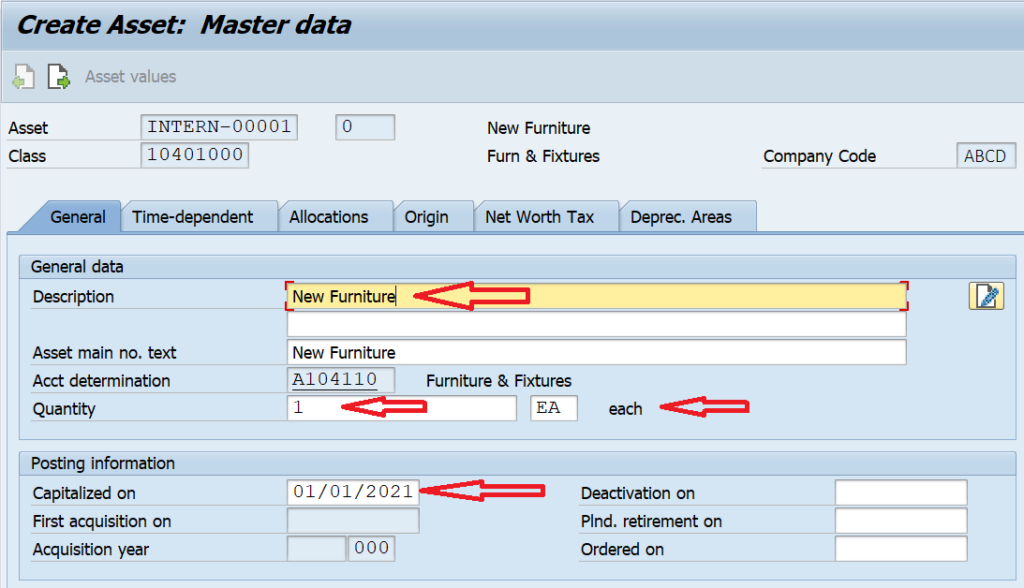
In the ‘Time-Dependent‘ tab, you need to enter the Cost Center. A cost center is required to book costs for an asset. Once you book the depreciation costs, the values will be posted to this cost center.
You can also specify the Location code, though it is an optional field and is used for information purposes only. If you are using a project to monitor and allocate the budget to an asset, then you can make use of the WBS element field. Please note that you can use only one of either Cost Center or a WBS element to book the asset costs.
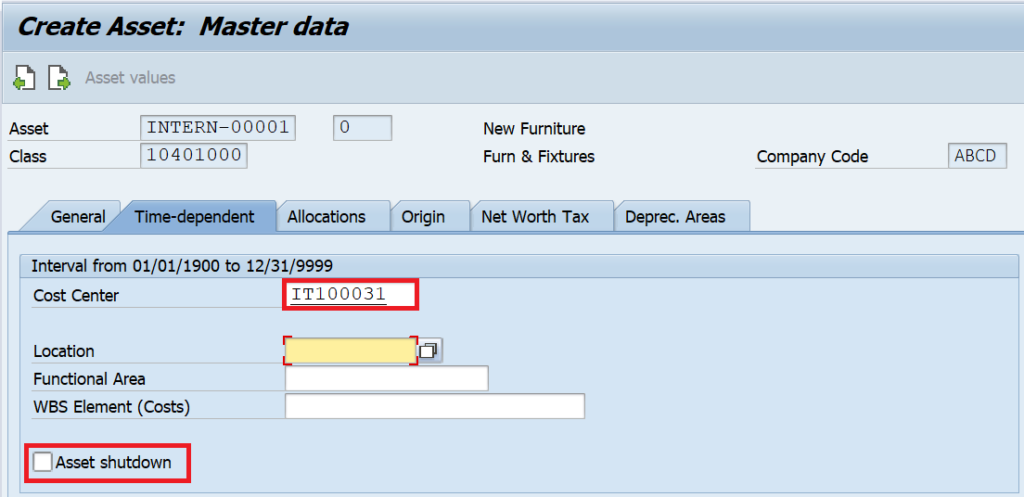
In some cases, organizations stop using an asset for a specific period of time. In such scenarios, the depreciation calculation also stops. You can enable this functionality by activating the ‘Asset Shutdown’ checkbox.
Enter the Allocations and Origin Details
In the ‘Allocations‘ tab, you can enter the evaluation groups. Evaluation groups are used for information purposes only and can be used for classifying an asset. For example, for furniture, you can create multiple evaluation groups like Wood, Glass, etc. Again, it is an optional field and you can leave it blank.
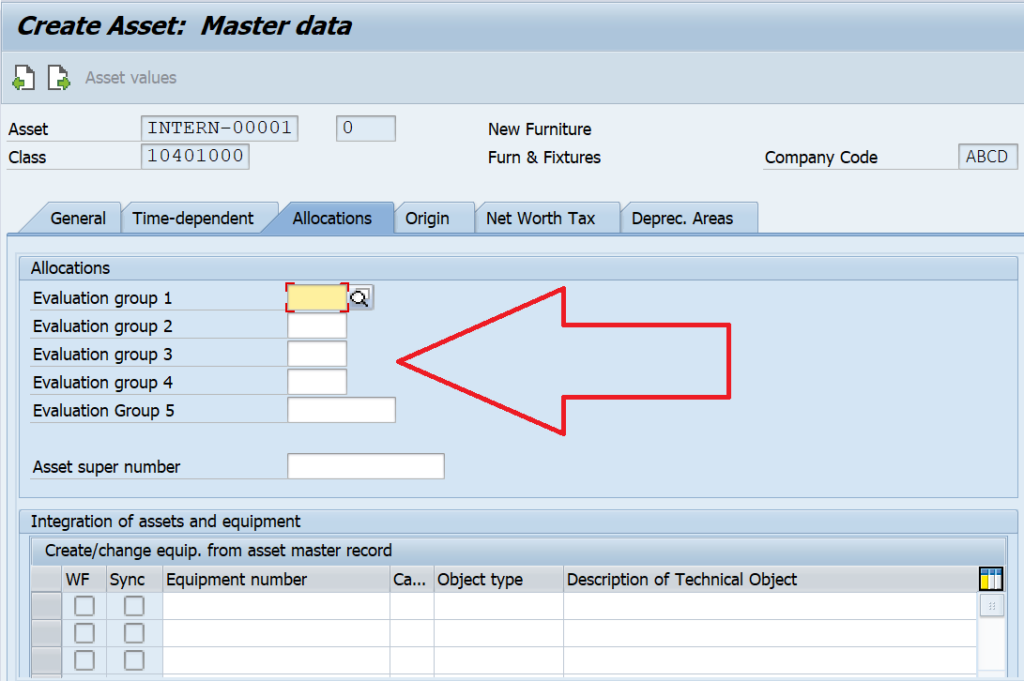
In the ‘Origin‘ tab, you can enter the vendor details from whom the asset has been purchased. Also, you can enter the manufacturer’s details along with the country of origin. Again, it is completely optional and you can leave it blank.
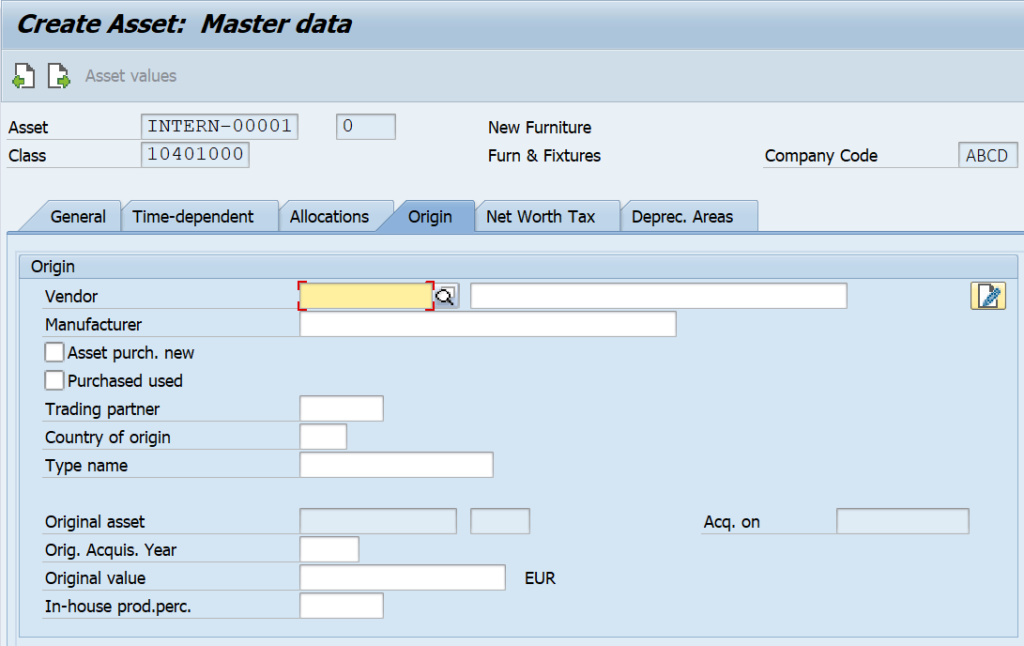
Enter the Depreciation Area Details
In the ‘Depreciation Areas‘ tab, you need to specify the useful life of the asset for all the depreciation areas. Please note that the Depreciation Key will be automatically picked from the configuration. A depreciation key allows you to calculate the depreciation amount according to different rules and calculations.
You can also enter the Depreciation Start date and the system will only calculate the depreciation from that date onwards.
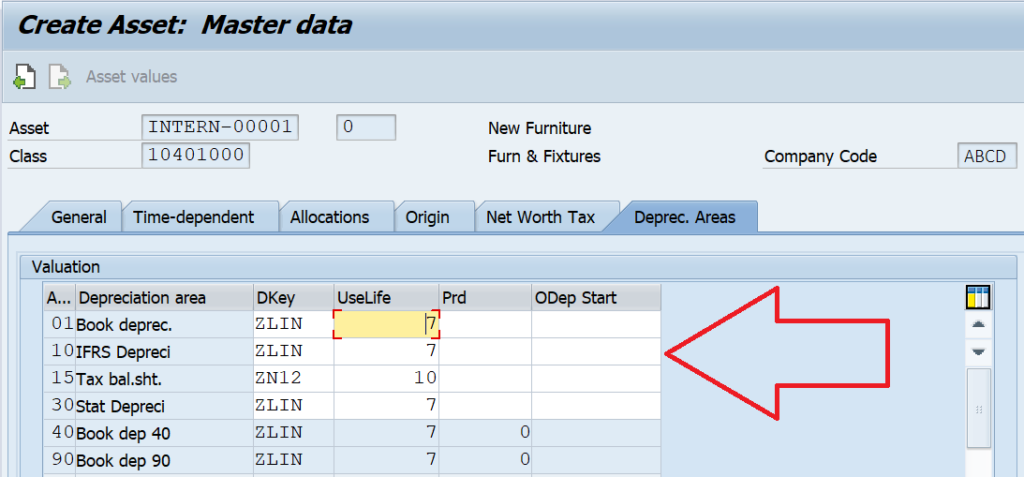
After entering all the details, click on the ‘Save’ button to create the asset. The system will generate an asset number in the notification bar. For example, in the screenshot below, 73 is the asset number and 0 is the sub-asset number.

Display an Asset in AS03
Since you have already created a new asset, you can display it in AS03. Execute the transaction AS03 and enter the Asset Number, Sub-Asset Number, and Company Code.

After entering the asset details, press Enter on your keyboard to view the asset details. You can navigate through all the tabs to display all the asset master data. In case of any changes, you can execute transaction AS02 to change the asset details.
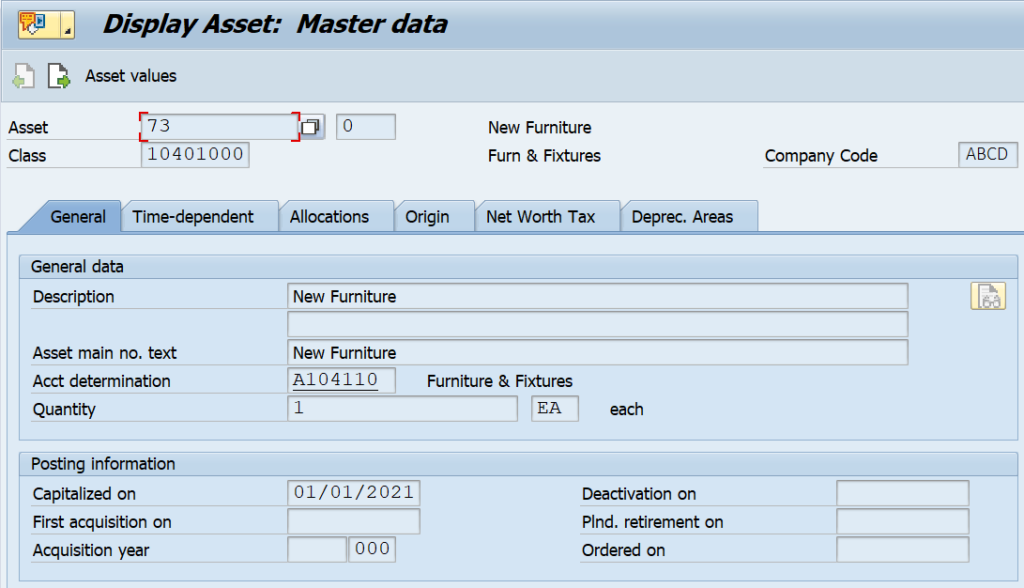
That concludes this tutorial on AS01 in SAP. I hope you have learned something new today. Drop me a comment below in case of any query. Stay tuned for more!!!



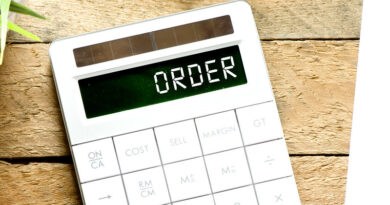
Pingback: AFAB: Execute Depreciation Run in SAP - SAPFICOBLOG
Pingback: ABUMN: Process Intra-Company Asset Transfer in SAP - SAPFICOBLOG